2018 Los Alamos Dynamics Summer School
Contact
- Institute Director
- Charles Farrar
- (505) 665-0860
- Executive Administrator
- Ellie Vigil
- (505) 667-2818
- Institute Administrator
- Vacant
Team Projects
Project Description
Mentors: Jason Anderson, Chuck Farrar, Bridget Martinez, Yongchao Yang (Remote), David Mascareñas
Students: Tia Kauppila, Kayla Wielgus, Howard Brand
The LANL mission requires accurately modeling the behavior of components containing energetic materials (i.e. explosives). Unfortunately, characterizing the behavior of energetic materials is complicated by safety requirements that stipulate that only a maximum size of material may be used during testing. The constraint on maximum size of material that can be tested can significantly impact the ability to characterize important material properties using conventional techniques. In this work we will develop imager-based techniques to extract modal damping information that can be used to infer the viscoelastic properties of materials such as explosives. These techniques will be based on video processing advances made at the LANL Engineering Institute that allow natural frequencies, mode shapes, and damping ratios to be extracted from video of a structure vibrating. The team will build an experimental setup to measure the viscoelastic properties of cubes of rubber-like materials with dimensions on the order of a few centimeters. We anticipate that a mass will be placed on top of the rubber material. A tapping device will also be included in the experimental setup to provide a repeatable excitation to the rubber-mass structure. The team will create an experimental imager setup to observe the rubber-mass structure. The team will also create a model of the rubber mass structure. The team will start their experiments using larger rubber samples so the results obtained with the imaging technique can be compared with the results from conventional techniques. The ultimate goal is for the team to demonstrate their technique on a length scale that is appropriate for explosive testing.Project Team
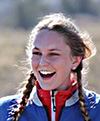 Tia Kauppila – I am currently a junior at Embry-Riddle Aeronautical University studying Mechanical Engineering. On campus, I am part of a student built aircraft team and a member of the society of women engineers. I am most interested in energy sources and airplanes. Outside of school, I am an avid yoga enthusiast and adventure seeker. I hope to be a part of the development of renewable energy sources in the future.
Tia Kauppila – I am currently a junior at Embry-Riddle Aeronautical University studying Mechanical Engineering. On campus, I am part of a student built aircraft team and a member of the society of women engineers. I am most interested in energy sources and airplanes. Outside of school, I am an avid yoga enthusiast and adventure seeker. I hope to be a part of the development of renewable energy sources in the future.
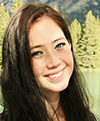 Kayla Wielgus - As a senior Civil Engineering student at Michigan Technological University, Structural Dynamics has become of interest to me. Accordingly, I will be continuing my academic journey through graduate studies in Structural Engineering & Mechanics at University of Washington in Fall 2018. During my undergraduate career, I have participated in Concrete Canoe and Tau Beta Pi, as well as having experience as an undergraduate research assistant. When I find time, I engage in my other passions of fitness, art, and exploring/getting lost. I am thrilled to perform research at Los Alamos National Laboratory this summer and I am curious to see what brilliant minds are harbored within the lab.
Kayla Wielgus - As a senior Civil Engineering student at Michigan Technological University, Structural Dynamics has become of interest to me. Accordingly, I will be continuing my academic journey through graduate studies in Structural Engineering & Mechanics at University of Washington in Fall 2018. During my undergraduate career, I have participated in Concrete Canoe and Tau Beta Pi, as well as having experience as an undergraduate research assistant. When I find time, I engage in my other passions of fitness, art, and exploring/getting lost. I am thrilled to perform research at Los Alamos National Laboratory this summer and I am curious to see what brilliant minds are harbored within the lab.
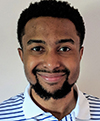 Howard Brand – I am a doctoral student in the Automotive Engineering department at Clemson University. I received my undergraduate and graduate degrees in Mechanical Engineering at Virginia Polytechnic Institute and State University. I worked as a research assistant in remote sensing for the crop production unit at the United States Department of Agriculture (USDA), which involved image segmentation and 2D signal processing, for crop spectral analysis and crop yield estimation using unmanned aerial vehicles (UAVs). I was an NSF East Asian and Pacific Summer Institute (EAPSI) Fellow which gave me the opportunity to conduct research for ten weeks in Kumamoto, Japan. In this research, I worked on a mobile base station which was used to process data from a microphone array from a UAV for acoustic localization. I am a member of the National Society of Black Engineers (NSBE). I enjoy cooking, reading historical fiction and learning about different cultures.
Howard Brand – I am a doctoral student in the Automotive Engineering department at Clemson University. I received my undergraduate and graduate degrees in Mechanical Engineering at Virginia Polytechnic Institute and State University. I worked as a research assistant in remote sensing for the crop production unit at the United States Department of Agriculture (USDA), which involved image segmentation and 2D signal processing, for crop spectral analysis and crop yield estimation using unmanned aerial vehicles (UAVs). I was an NSF East Asian and Pacific Summer Institute (EAPSI) Fellow which gave me the opportunity to conduct research for ten weeks in Kumamoto, Japan. In this research, I worked on a mobile base station which was used to process data from a microphone array from a UAV for acoustic localization. I am a member of the National Society of Black Engineers (NSBE). I enjoy cooking, reading historical fiction and learning about different cultures.
Project Description
Mentors: David Mascareñas, Thomas Lienert, Bridget Martinez, Garett Kenyon, Yongchao Yang (remote)
Students: Cedric Hayes, Caleb Schelle, Gregory Taylor
The goal of this work is to develop an online, imager-based qualification and control system for manufacturing processes that use a melt pool (GTA/laser welding, additive manufacturing). This work will be based on LANL-developed algorithms for automatically characterizing the dynamics of vibrating structures at high spatial resolution using video [1]. Significant research on using high-speed video to characterize melt pools has been done in the past, but until now there has never been a systematic technique for extracting structural dynamics information from the video that can be used to infer otherwise indiscernible geometric properties of melt pools that can be used to quantify manufacturing quality and control the process for improved performance. Furthermore, the advent of event-based imagers opens the door to enabling real-time qualification and control of additive manufacturing processes. In this work the team will use conventional imagers, event-based imager and perhaps also thermal imagers, in combination with other sensors to characterize the physical and geometric properties of a pool of liquid metal from relevant spatio-temporal patterns extracted from this data. The team will perform verification and validation of their work using physical modeling and technologies such as laser-Doppler vibrometers where possible. Modeling of the physical melt pool will also be used to guide and inform the experimentation.Project Team
 Cedric Hayes - I am a senior at New Mexico Tech (NMT), majoring in Mechanical Engineering and Technical Communications. I am also the graphic designer at the New Mexico Tech Performing Arts Series. I enjoy making illustrations, building circuits, designing games and experiences, designing parts, and creating systems. I have written a thesis on how games help students learn and I believe that interactive experiences will be a powerful tool in training and education in the near future (especially AR simulations). As part of NMT’s 2 year design clinic, I have worked on programming and wiring the hardware control for a rover that was designed to retrieve a fallen soldier from the battlefield, and I have helped to create a VR menu and updatable database of markers using unity and Hololens.
Cedric Hayes - I am a senior at New Mexico Tech (NMT), majoring in Mechanical Engineering and Technical Communications. I am also the graphic designer at the New Mexico Tech Performing Arts Series. I enjoy making illustrations, building circuits, designing games and experiences, designing parts, and creating systems. I have written a thesis on how games help students learn and I believe that interactive experiences will be a powerful tool in training and education in the near future (especially AR simulations). As part of NMT’s 2 year design clinic, I have worked on programming and wiring the hardware control for a rover that was designed to retrieve a fallen soldier from the battlefield, and I have helped to create a VR menu and updatable database of markers using unity and Hololens.
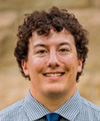 Caleb Schelle – I am a graduating senior in mechanical engineering at Colorado School of Mines. My current research involves laser microscopy of 3D printed parts to determine surface metrology. This technology will be used in additive manufacturing to check the sub-micron surface profile of titanium builds during the manufacturing process. My hobbies include cooking, brewing beer, skiing, fly-fishing, and camping.
Caleb Schelle – I am a graduating senior in mechanical engineering at Colorado School of Mines. My current research involves laser microscopy of 3D printed parts to determine surface metrology. This technology will be used in additive manufacturing to check the sub-micron surface profile of titanium builds during the manufacturing process. My hobbies include cooking, brewing beer, skiing, fly-fishing, and camping.
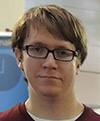 Gregory Taylor - I am a student studying Mechanical Engineering at New Mexico State University. Currently, my research involves characterization of bifurcations in the nonlinear vibrating systems. I also have an interest in training agents to perform nonlinear control. Outside of university I enjoy playing strategy games, magic the gathering, discussing politics, and eating good food.
Gregory Taylor - I am a student studying Mechanical Engineering at New Mexico State University. Currently, my research involves characterization of bifurcations in the nonlinear vibrating systems. I also have an interest in training agents to perform nonlinear control. Outside of university I enjoy playing strategy games, magic the gathering, discussing politics, and eating good food.
Project Description
Mentors: Alessandro Cattaneo and Troy Harden
Students: Levi Manring, John Pederson, Dillon Potts
Augmented reality (AR) is an emerging field that offers new tools for human-based control and interaction with complex systems. AR technology enables to overlay additional sensory information to the surrounding environment with the ultimate goal to alter human’s perception of the real world. As an example, off-the-shelf AR headsets offer the ability to map the surrounding environment and overlay holograms (i.e. three-dimensional images) on top of it. The overlaid holograms offer enriched visual information and can be used as a means for feedback control. Nowadays robots can fulfill complex tasks (e.g. manufacturing and assembling tasks) under demanding constraints (e.g. tight geometric tolerances, short processing times). Modern robots are effective in achieving these tasks when their jobs are planned in structured environments and unexpected contingency events are kept at minimum. For example, welding robots in an automated car production line are able to perform repetitive jobs with high accuracy on components that always occupy the same position relative to the robot. If obstacles are present (e.g. frame of the car), the welding robot arm trajectory can be planned ahead of time to minimize the risk of collisions (e.g. when reaching the inside of the car frame). This project explores the possibility of using AR for the interactive control of a Yaskawa® SIA5F 7‑axis articulated robot arm in non-structured environments. A state‑of‑the‑art Robotiq® 3-finger adaptive gripper mounted on the robot’s wrist offers broad flexibility in the shapes of the object that can be picked up.
Project Team
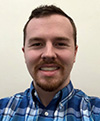 Levi Manring – I am a 2nd year Mechanical Engineering PhD student at Duke University. In my research, I am currently focused on using Reinforcement Learning to create adaptive dynamic control systems. I am also the Chair of Projects for the Advanced Professional Degree Consulting Club, which involves interacting with consulting clients, managing team leaders, and recruiting team members. In my spare time, I enjoy playing the piano, cooking, and baking.
Levi Manring – I am a 2nd year Mechanical Engineering PhD student at Duke University. In my research, I am currently focused on using Reinforcement Learning to create adaptive dynamic control systems. I am also the Chair of Projects for the Advanced Professional Degree Consulting Club, which involves interacting with consulting clients, managing team leaders, and recruiting team members. In my spare time, I enjoy playing the piano, cooking, and baking.
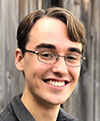 John Pederson - Hi! I’m a junior mechanical engineer at Columbia University, where I’ve been a member of Tau Beta Pi, the AIAA chapter, the Columbia Makerspace, and the Columbia Space Initiative. For the last, I’m on the High-Altitude Balloons team, working on a transmitting altimeter. I’ve also volunteered in the Mechatronics lab for about two years, using a Roomba, rangefinder, and Arduino to test navigation algorithms. I’d love to pursue a doctorate in the future. Apart from school, playing piano, researching celestial navigation, and stargazing are my favorite hobbies.
John Pederson - Hi! I’m a junior mechanical engineer at Columbia University, where I’ve been a member of Tau Beta Pi, the AIAA chapter, the Columbia Makerspace, and the Columbia Space Initiative. For the last, I’m on the High-Altitude Balloons team, working on a transmitting altimeter. I’ve also volunteered in the Mechatronics lab for about two years, using a Roomba, rangefinder, and Arduino to test navigation algorithms. I’d love to pursue a doctorate in the future. Apart from school, playing piano, researching celestial navigation, and stargazing are my favorite hobbies.
 Dewey Potts - I was born in the city of Bethlehem (Pennsylvania) before moving to Utah where I attended high school and later college at Brigham Young University. At BYU I have participated in the Baja Racecar Team, High Powered Rocketry Team, and the American Society of Mechanical Engineers. I currently work as a research assistant in the fluids lab where I study heat transfer of super hydrophobic surfaces undergoing jet impingement. I plan to get a PhD in Mechanical Engineering and become a professor. When I am not at the engineering building, I enjoy hiking and yoga.
Dewey Potts - I was born in the city of Bethlehem (Pennsylvania) before moving to Utah where I attended high school and later college at Brigham Young University. At BYU I have participated in the Baja Racecar Team, High Powered Rocketry Team, and the American Society of Mechanical Engineers. I currently work as a research assistant in the fluids lab where I study heat transfer of super hydrophobic surfaces undergoing jet impingement. I plan to get a PhD in Mechanical Engineering and become a professor. When I am not at the engineering building, I enjoy hiking and yoga.
Project Description
Mentors: Emily Casleton, Earl Lawrence, DJ Luscher, Saryu FensinStudents: Samuel Myren, Andrew Shoats, Emilio Herrera
Computational models for representing the behavior of materials under stress are becoming increasingly computationally intensive and complex. Their increased computational burden means it is difficult to use them directly in problems of parameter estimation and uncertainty quantification, which require running the code many times. As a result, these models are often replaced by statistical approximations, called emulators, for these tasks. However, these approximations can be difficult to build when the materials model has a large number of inputs. This project will consider the use of active subspace methods to reduce the input dimensionality for a materials model and then calibrate the model with experimental data. We will focus on tantalum whose strength and heat resistance make it very useful in applications like armaments, jet engines, and spacecraft reentry. We will experiment and model tantalum single crystals placed under stress using an MTS machine to compress the crystals uniaxially.
Project Team
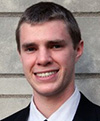 Samuel Myren - I just finished my junior year studying Engineering Physics at Rose-Hulman Institute of Technology. In my studies I explore how revolutionary technologies function at the nanoscale and I learn about the physical laws that allow it to happen. It is an incredible field and I plan to utilize topics like quantum mechanics and optics to drive the next best technology, whether that is thin film solar energy development, expanding quantum computing, or building rockets. However, outside of physics I also enjoy studying economics and business and I have always dreamed about applying my technical and mathematical skills to develop economic models to inform financial policy (or more simply, just to crack Wall St). Outside of academics, I am currently involved in student government and I intern part-time for a construction company based out of Indianapolis, IN. Separate from all of this, I am a certified white-water raft guide in the state of Colorado.
Samuel Myren - I just finished my junior year studying Engineering Physics at Rose-Hulman Institute of Technology. In my studies I explore how revolutionary technologies function at the nanoscale and I learn about the physical laws that allow it to happen. It is an incredible field and I plan to utilize topics like quantum mechanics and optics to drive the next best technology, whether that is thin film solar energy development, expanding quantum computing, or building rockets. However, outside of physics I also enjoy studying economics and business and I have always dreamed about applying my technical and mathematical skills to develop economic models to inform financial policy (or more simply, just to crack Wall St). Outside of academics, I am currently involved in student government and I intern part-time for a construction company based out of Indianapolis, IN. Separate from all of this, I am a certified white-water raft guide in the state of Colorado.
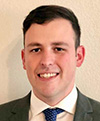 Andrew Shoats – I am a senior Mechanical Engineering major at the University of California, Davis. Before I attended UC Davis, I spent four years as a medic in the US Army, during which time I deployed once to Afghanistan. My current research is in microchannel heat exchange through a project funded by the Office of Naval Research, and I have research experience in the creation of sensor fusion algorithms for smartphone inertial measurement units (IMUs). This fall, I will start as a PhD student at Stanford University, where I plan to apply research in control theory to complex dynamical systems such as medical robotics and autonomous vehicles. Outside of school, I enjoy watching nearly every movie that comes out, and taking long walks with my dog.
Andrew Shoats – I am a senior Mechanical Engineering major at the University of California, Davis. Before I attended UC Davis, I spent four years as a medic in the US Army, during which time I deployed once to Afghanistan. My current research is in microchannel heat exchange through a project funded by the Office of Naval Research, and I have research experience in the creation of sensor fusion algorithms for smartphone inertial measurement units (IMUs). This fall, I will start as a PhD student at Stanford University, where I plan to apply research in control theory to complex dynamical systems such as medical robotics and autonomous vehicles. Outside of school, I enjoy watching nearly every movie that comes out, and taking long walks with my dog.
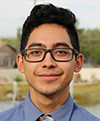 Emilio Herrera - I’m a junior attending New Mexico Institute of Mining and Technology for Mechanical Engineering. Being a military brat, I’ve lived in several states across the US. Moving across the country every few years forced me to learn how to adapt to new situations and environments, presenting many opportunities for cultural and intellectual growth. I spent my final two years of high school in the STEM program of Arrowhead Park Early College High School in Las Cruces, NM. This accelerated my schooling, as well as allowed me to graduate with two associates degrees from NMSU. Thanks to my life experiences I have a desire to spread my engineering knowledge, causing my interests to move in the direction of robotics, computer systems, and biomechanics.
Emilio Herrera - I’m a junior attending New Mexico Institute of Mining and Technology for Mechanical Engineering. Being a military brat, I’ve lived in several states across the US. Moving across the country every few years forced me to learn how to adapt to new situations and environments, presenting many opportunities for cultural and intellectual growth. I spent my final two years of high school in the STEM program of Arrowhead Park Early College High School in Las Cruces, NM. This accelerated my schooling, as well as allowed me to graduate with two associates degrees from NMSU. Thanks to my life experiences I have a desire to spread my engineering knowledge, causing my interests to move in the direction of robotics, computer systems, and biomechanics.
Project Description
Mentors: Eric Flynn and Adam WachtorStudents: Greta Colford, Erica Jacobson, Kaden Plewe
In monitoring and surveillance applications, local measurements are often not possible due to instrumentation costs and/or access restrictions. In these situations, one must rely on remote measurements for making assessments about the system and detecting anomalous behavior. However, in remote monitoring situations, rather than capturing the system behavior directly, one can only capture the behavior after it’s been “filtered” through the propagation environment that stands between the system and the sensor(s). In addition, one must also necessarily capture the emissions of all other systems present in that environment, confounding the measurement.
The fundamental difficulty with remote detection then is that after the signal of interest has been attenuated by the propagation environment, it becomes undetectable among the other emissions. However, if the signal is continuous, or at least repetitive, then measurements that are in some way “averaged” over time can make the undetectable, detectable.
Project Team Greta Colford – I am a senior studying Mechanical Engineering with an Aerospace Engineering minor at Michigan Technological University in Houghton, MI. I am involved in my university’s Aerospace Enterprise building small satellites though the University Nanosatellite Program sponsored by the Air Force Research Laboratory. In addition to studying engineering, I am a learning center coach at my university’s writing center. I am also a member of Engineering Ambassadors, Greek life, and the Nordic skiing club at Michigan Tech. I spent last summer interning for LANL in the Applied Engineering Technology Division. I am graduating in December 2018 and plan on attending graduate school the following fall. Outside of school I enjoy running, camping, and listening to music.
Greta Colford – I am a senior studying Mechanical Engineering with an Aerospace Engineering minor at Michigan Technological University in Houghton, MI. I am involved in my university’s Aerospace Enterprise building small satellites though the University Nanosatellite Program sponsored by the Air Force Research Laboratory. In addition to studying engineering, I am a learning center coach at my university’s writing center. I am also a member of Engineering Ambassadors, Greek life, and the Nordic skiing club at Michigan Tech. I spent last summer interning for LANL in the Applied Engineering Technology Division. I am graduating in December 2018 and plan on attending graduate school the following fall. Outside of school I enjoy running, camping, and listening to music.
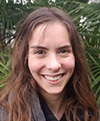 Erica Jacobson – I am a graduate student at Michigan Technological University, working toward my Master’s Degree in Mechanical Engineering with focus in vibrations, shock, and controls. My current research project is to develop and refine a pyro shock test fixture that can be tailored to a variety of Shock Response Spectrum requirements for electronic components.
Erica Jacobson – I am a graduate student at Michigan Technological University, working toward my Master’s Degree in Mechanical Engineering with focus in vibrations, shock, and controls. My current research project is to develop and refine a pyro shock test fixture that can be tailored to a variety of Shock Response Spectrum requirements for electronic components.
Outside of school, I enjoy running (especially trail running), hiking, skiing, knitting, and photography. I am from Michigan, having spent most of my childhood in Ann Arbor. I currently live in Houghton MI, where my school is located, but also where my great-great-grandmother immigrated from Finland.
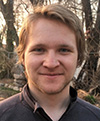 Kaden Plewe – I am currently working towards my Master’s Degree in Mechanical Engineering at the University of Utah. I currently work as an Energy Consultant for the Intermountain Industrial Assessment Center and as a Research Assistant in the Site-Specific Energy Systems Laboratory. My research and academic interests include building energy dynamics, applications of AI in building energy modeling, and emissions and water quantifications in the energy sector. I am a native to Salt Lake City and enjoy exploring natural and urban spaces through hiking, camping, cycling and fishing as well as watching films and listening to live music.
Kaden Plewe – I am currently working towards my Master’s Degree in Mechanical Engineering at the University of Utah. I currently work as an Energy Consultant for the Intermountain Industrial Assessment Center and as a Research Assistant in the Site-Specific Energy Systems Laboratory. My research and academic interests include building energy dynamics, applications of AI in building energy modeling, and emissions and water quantifications in the energy sector. I am a native to Salt Lake City and enjoy exploring natural and urban spaces through hiking, camping, cycling and fishing as well as watching films and listening to live music.
Project Description
Mentors: Dustin Harvey, Colin Haynes, and Stuart Taylor
Students: Adam Bouma, Abigail Campbell, Thomas Roberts
Mechanical vibration environments are typically derived from the response of a system-level field test with a multi-axis excitation source. Most laboratory testing for system and component qualification is performed using multiple, single-axis tests. Ideally, components would be tested on the system in realistic, field boundary conditions, but this approach rarely occurs because of financial, hardware, and facility constraints. Often, these constraints also prevent individual components from being fixtured on the real system during testing, requiring the component to be tested in a different configuration than its intended design. As an added layer of complexity, components that were not instrumented in the field test will require an additional, intermediate system-level test to measure their specific component environments.
Project Team
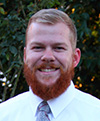 Adam Bouma - I am a Graduate Student studying Mechanical Engineering at New Mexico State University, where I am an Instructor for an Introduction to Engineering Course, performing data analysis concerning the Engineering Learning Communities at NMSU regarding the diversity of students using the space, and conduct research in the Nonlinear Dynamics and Energy Harvesting Lab in the Mechanical and Aerospace Engineering Department at NMSU. Currently, my research involves fluid structure interaction with Aquatic Unmanned Vehicles (AUVs), shape optimization of AUVs, and design and fabrication of dynamic systems. Outside of school, I enjoy homebrewing, playing and watching baseball, and watching movies.
Adam Bouma - I am a Graduate Student studying Mechanical Engineering at New Mexico State University, where I am an Instructor for an Introduction to Engineering Course, performing data analysis concerning the Engineering Learning Communities at NMSU regarding the diversity of students using the space, and conduct research in the Nonlinear Dynamics and Energy Harvesting Lab in the Mechanical and Aerospace Engineering Department at NMSU. Currently, my research involves fluid structure interaction with Aquatic Unmanned Vehicles (AUVs), shape optimization of AUVs, and design and fabrication of dynamic systems. Outside of school, I enjoy homebrewing, playing and watching baseball, and watching movies.
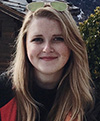 Abigail Campbell: I am a recent graduate in Mechanical Engineering from the University of Utah. I also obtained a minor in mathematics, was a member of the Chi Omega sorority, and participated on a robotic mining team and a bionic exoskeleton team. My undergraduate research involved increasing the longevity of prosthetic hip implants by adding a patterned microtexture to the Cobalt-Chromium head in order to increase l lubricant film thickness and reduce friction. I plan on attending graduate school in the near future. Outside of school I enjoy skiing, hiking, traveling, and anything else outdoors.
Abigail Campbell: I am a recent graduate in Mechanical Engineering from the University of Utah. I also obtained a minor in mathematics, was a member of the Chi Omega sorority, and participated on a robotic mining team and a bionic exoskeleton team. My undergraduate research involved increasing the longevity of prosthetic hip implants by adding a patterned microtexture to the Cobalt-Chromium head in order to increase l lubricant film thickness and reduce friction. I plan on attending graduate school in the near future. Outside of school I enjoy skiing, hiking, traveling, and anything else outdoors.
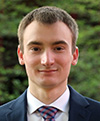 Thomas Roberts – I am a junior mechanical engineering student at Rose-Hulman Institute of Technology. At Rose-Hulman, I am a member of Tau Beta Pi, Blue Key, and I am a Sophomore
Thomas Roberts – I am a junior mechanical engineering student at Rose-Hulman Institute of Technology. At Rose-Hulman, I am a member of Tau Beta Pi, Blue Key, and I am a Sophomore
Resident Tutor. My academic interests lie in the fields of vibrations and finite element analysis; I plan to seek out graduate school opportunities after graduating from Rose-Hulman. Coming from a small town in northern Wisconsin, I spend a lot of my free time hunting, fishing, and being outside; aside from outdoor activities, my favorite pastimes are woodworking and woodturning.
Project Description
Mentors: Garrison Stevens and Kyle Hammond
Students: Gary Adkins, Clayton Little, Peter Meyerhofer
Additive manufacturing (AM) is a rapidly expanding industry due to the capability to efficiently prototype and produce complex parts. However, we know that AM parts do not have the same mechanical properties as an identical part machined from bulk material. In fact, properties are likely to change based on the process parameters selected during manufacturing. For example, the build orientation and type of heat treatment used in selective laser melting have been shown to change the lattice structure of titanium parts, thus changing the part density and compressive strength (Wauthle et al. 2015). However, our understanding of the effects of manufacturing process on dynamic response remains lacking despite structural dynamics often being a critical system behavior of interest.
In this project, students will characterize the structural dynamics of geometrically identical parts additively manufactured using different process parameters. First, parts will be tested using a shake table while dynamics are measured using digital image correlation (DIC). DIC is an optical method that uses cross-correlation to track surface movements, providing full-field displacement and strain measurements. With advances in our data acquisition and digital camera technologies, we can collect high frame rate measurements to be used for DIC. Next, part dynamics will be simulated using a finite element model. Test analysis correlation of FE model predictions to DIC measurements will be used to determine necessary corrections to material model parameters to account for AM process parameters.
Project Team
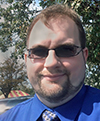 Gary Adkins- I am a junior in mechanical engineering at Iowa State University, where I am a part of the Cultural Ambassador program, the Honors program, and am an active member of the Society of International Engineers. In my spare time I enjoy acting, cooking, reading and watching anime.
Gary Adkins- I am a junior in mechanical engineering at Iowa State University, where I am a part of the Cultural Ambassador program, the Honors program, and am an active member of the Society of International Engineers. In my spare time I enjoy acting, cooking, reading and watching anime.
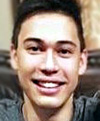 Clayton Little – I am a junior studying mechanical engineering at Rice University in Houston, Texas. My research is in the field of tribomechadynamics, which is the study of how friction affects the behavior of joints and jointed structures. Specifically, I am currently developing a novel interfacial friction model with my mentor, Professor Matthew Brake. At Rice, I am a team lead in the Human Powered Vehicles Club, volunteer with the Academic Mentors Society, manage the McMurtry Innovation Space, and play on the club tennis team. Outside of class, I play rhythm guitar in a band, brew wine, and read. I also spend a lot of time woodworking and metalworking on various projects.
Clayton Little – I am a junior studying mechanical engineering at Rice University in Houston, Texas. My research is in the field of tribomechadynamics, which is the study of how friction affects the behavior of joints and jointed structures. Specifically, I am currently developing a novel interfacial friction model with my mentor, Professor Matthew Brake. At Rice, I am a team lead in the Human Powered Vehicles Club, volunteer with the Academic Mentors Society, manage the McMurtry Innovation Space, and play on the club tennis team. Outside of class, I play rhythm guitar in a band, brew wine, and read. I also spend a lot of time woodworking and metalworking on various projects.
 Peter Meyerhofer – I am a graduate student at Case Western Reserve University, studying Mechanical Engineering. The subject of my Master’s thesis is a Liquid Natural Gas submarine for Saturn’s moon Titan, an advanced NASA concept vehicle. My main activity outside of class is martial arts, and I have a prominent role in Case Western’s Kung Fu club. I also enjoy hiking, math problems and technical reading.
Peter Meyerhofer – I am a graduate student at Case Western Reserve University, studying Mechanical Engineering. The subject of my Master’s thesis is a Liquid Natural Gas submarine for Saturn’s moon Titan, an advanced NASA concept vehicle. My main activity outside of class is martial arts, and I have a prominent role in Case Western’s Kung Fu club. I also enjoy hiking, math problems and technical reading.
Selected Guest Lectures
Eric B. Flynn
LANL, Space and Remote Sensing (ISR-2)
Scanning laser-ultrasound, defined as the use of an area-swept laser for exciting and/or sensing ultrasonic waves, is a fast-emerging technique for structural health monitoring (SHM) and nondestructive inspection (NDI). In this talk I will describe our implementation of three excitation-sensing modalities: laser-excitation, laser-sensing, and fully noncontact inspection, as well as two waveform types: broadband pulses and band-limited harmonics. Each of these implementations uses some combination of laser-Doppler vibrometry, a high power pulsed laser, and/or traditional piezoelectric transducers. For each modality, I will discuss the specialized three-dimensional (X, Y, & time) signal processing techniques we have developed as well as the advantages and disadvantages that we found both in measurement quality and in practical implementation. I will describe in detail our application of wavenumber spectroscopy, which is the analysis of spatial-spectrum information in order to characterize wave propagation mediums. Using these measurement modalities and signal processing techniques, we have effectively imaged a range of corrosion- and delamination-type defects. I will also present some preliminary results on the more challenging problems of detecting small defects, such as cracks, as well as fluid levels in containers. Finally, we conclude with a discussion on the role laser-ultrasound could play in a greater guided-wave hybrid SHM-NDI framework.
Bridget Martinez
LANL, Engineering Institute
Mechanoreciprocity refers to a cells’ ability to maintain tensional homeostasis in response to various types of forces. Physical forces are continually being exerted upon cells of various tissue types, even those considered static tissues, such as the brain. Through mechanoreceptors, cells sense and subsequently respond to these stimuli. These forces and their respective cellular responses are prevalent in regulating everything from embryogenic tissue-specific differentiation, programmed cell death, and in what has garnered the most attention, disease progression. Abnormal mechanical remodeling of cells can provide clues as to the pathological status of many tissues. This becomes particularly important in cancer cells, where cellular stiffness has been recently accepted as a novel biomarker for cancer metastasis. Several studies have also elucidated the importance of cell stiffness in cancer metastasis, with data highlighting that a reversal of tumor stiffness has the capacity to revert the metastatic properties of cancer. Here we summarize our current understanding of extracellular matrix (ECM) homeostasis, which plays a prominent role in tissue mechanics. We also describe pathological disruption of the ECM and the subsequent implications towards cancer and cancer metastasis. In addition, we also highlight the most novel approaches toward understanding the mechanisms which generate pathogenic cell stiffness and also provide potential new strategies which have the capacity to advance our understanding of one of human-kinds’ most detrimental medical pathologies. These new strategies include video-based techniques for structural dynamics, which have shown great potential for identifying full-field, high-resolution modal properties, in this case as a novel application.
Curtt Ammerman
LANL, B61-12 Life Extension Program (Q-15)
Los Alamos National Laboratory is the nuclear design agency responsible for the B61-12 Life Extension Program (LEP). The term “life extension program” means a program to repair/replace components of a nuclear weapon to ensure its ability to meet military requirements. By extending the life, or time that a weapon can safely and reliably remain in the stockpile without having to be replaced or removed, the National Nuclear Security Administration (NNSA) is able to maintain a credible nuclear deterrent without producing new weapons or conducting new underground nuclear tests. This LEP will consolidate multiple B61 mods, replace aging components, and extend the lifetime of the B61 for an additional 20 to 30 years. The LEP will complete a first production unit no later than the end of FY2020. This presentation will provide a brief overview of the B61LEP, and will dive more deeply into the testing and qualification activities that are being conducted to ensure that the B61-12 meets its requirements to be safe and reliable.
Jon R. Schoonover
Deputy Associate Director
Threat Identification and Response
Los Alamos has done intelligence work since its inception. This talk discusses why LANL does Intel work and what that work is based on LANL’s approach to strategic deterrence and stockpile stewardship. The talk also discusses how structurally the global security part of LANL accomplishes Intel work. Opportunities for students and future staffing is also discusses.
Patrick McClure
LANL, Systems Design and Analysis (NEN-5)
The Kilopower Project was initiated by NASA’s Space Technology Mission Directorate/Game Changing Development Program in fiscal year 2015 to demonstrate subsystem-level technology readiness of small space fission power in a relevant environment for space science and human exploration power needs. The Kilopower Project centerpiece is the Kilopower Reactor Using Stirling Technology (KRUSTY) test, which consists of the development and testing of a fission ground technology demonstrator of a 1 kWe-class fission power system. The technologies developed and validated by KRUSTY are extensible to space fission power systems from 1 to 10 kWe, which can enable modular surface fission power systems for human exploration, as well as higher power future potential deep space science missions. The KRUSTY demonstration is co-funded by NASA and the Department of Energy National Nuclear Security Administration (NNSA). The talk will focus on how the Kilopower project could provide power for potential missions on Mars or for deep space science missions. In addition, the talk will cover the recent KRUSTY series of tests performed at the Nevada National Security Site and their impact on moving the Kilopower project forward.
Phillip Cornwell
Professor of Mechanical Engineering
Rose-Hulman Institute of Technology
The vast majority of engineers do not use an approach to presentation slide design that is supported by research on effective technical communications. The slides often contain bulleted lists that are designed to be useful for the presenter but are of virtually no value to the audience. In this talk, Dr. Cornwell will discuss how to give effective oral presentations using a type of slide design called the assertion-evidence approach. In this approach, the speaker explicitly identifies the messages (assertions) he or she is trying to present and provides the evidence to support these assertions. The information in this talk is based on the work of Dr. Michael Alley from Penn State. In addition to the main topic of effective slide design, Dr. Cornwell will also present an overview of conference paper requirements.
Nick Lieven
Professor of Aircraft Dynamics
University of Bristol
Nikolaos Dervilis
Dynamics Research Group, Department of Mechanical Engineering
University of Sheffield
The use of offshore wind farms has been growing in recent years. United Kingdom is presenting a geometrically-growing interest in exploring and investing in such offshore power plants as the country's water sites offer impressive wind conditions. However, the cost of an offshore wind farm is relatively high, and therefore their reliability is crucial if they ever need to be fully integrated into the energy arena.
Professor Emeritus, Mechanical Engineering
University of Massachusetts Lowell
Co-Director, Structural Dynamics and Acoustic Systems Laboratory
Director, Modal Analysis and Controls Laboratory
The Structural Dynamics and Acoustic Systems Laboratory (SDASL) focuses on research related to analytical and experimental problems in the areas of structural and acoustic systems. The main thrust of the SDASL is to develop, employ and improve techniques to solve these problems using analytical approaches that are verified through experimental techniques.
Over 4 decades experience in design, analysis, finite element modeling and experimental modal and structural dynamic testing. Main area of research is structural dynamics specializing in the areas of modeling, testing and correlation of analytical and experimental models and integration of analytical and experimental techniques. Research, testing and consulting performed for automotive, aerospace, defense and computer/consumer related areas. Written over 200 technical papers and given numerous seminars in the areas of experimental modal analysis, structural dynamics, vibration fixture design, and modeling and correlation.



